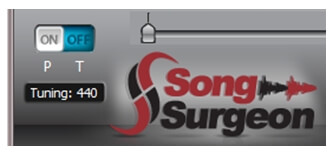A440 and Alternative Tunings
While not an international standard, the American Standards Association recommended in 1936 that the A above middle C be tuned to 440 Hz. This standard was taken up by the International Organization for Standardization in 1955. Although not universally accepted, since then it has served as the audio frequency reference for the calibration of acoustic equipment and the tuning of pianos, violins, and other musical instruments.
Practically what does that mean? It means that almost all music you hear or listen to across the globe today uses A440 tuning.
Joseph Saveur, known as "the father of musical acoustics", developed a method that made it possible to determine the precise pitch of a note in cycles per second. In testing this method, he found that middle C came to 256 oscillations per second -- this is also known as the "scientific" tuning and was widely accepted up until the middle of the twentieth century. Likewise, Giuseppe Verdi, an Italian composer, placed A exactly at 432 hertz because this is the ideal pitch for opera voices. Mozart tuned at C=256 and at A=430 hertz, as well as Beethoven and J.S. Bach. by 1815, there came a demand from European royalty for a "brighter" sound in compositions, carried out by renowned musicians Richard Wagner and Friedrich Liszt. Wagner even specifically redesigned certain instruments to only be able to play at 440 hertz and above.This resulted in a type of musical confusion, as by the middle of the nineteenth century, there were European theaters playing at pitches varying from 420 hz to as high as 460 hz , with some pitches in Venice even higher than 460.
Tuning became such a huge issue that it was brought to the attention of the government once more by the latter part of the 1850s, when Rossini called for the first official "standardization of pitch" of the current time period. Thus, a law was passed in France establishing A at 435 and C at 256. This was the official standard tuning in most parts of the world up until World War II, when a conference was called in 1939 by Joseph Goebbels, who had already standardized A=440 as the national German pitch. This attempt failed, and a second conference was organized in London in 1953 to impose A=440 internationally. This conference, too, did not establish A as 440, and, "As recently as 1971, the European Community passed a recommendation calling for the still non-existent international pitch standard."
Some people believe that there are restorative and healing benefits to A=432 tuning since it is "mathematically consistent with the universe," and that it is a "pure tone of math fundamental to nature."Additionally, according to Brian T. Collins (a musician and researcher), A=440 Hz does not harmonize on any level corresponding to cosmic movement or rhythm. Dutch journalist Richard Huisken even claimed that A=432 was used in ancient cultures and gives greater clarity and warmer tones than the music tuned at 440 Hz that we listen to today. Because of the increased clarity, there may not be a need to play it as loudly as we play 440 music, leading to preserved hearing and reduced noise pressure. There are some who even believe that A=440 was enforced by Nazi propaganda, used to make people think and feel a certain manner and to force them to experience certain consciousness. Is it true? Probably not -- but there are difference differences between 440 and 432 which audiophiles can hear. And with Song Surgeon you can readily change between several alternative tunings and listen yourself.
http://www.schillerinstitute.org/music/rev_tuning_hist.html http://attunedvibrations.com/432hz/
The Pro version of Song Surgeon has the ability to change the tuning of music or a song. It works with the standard or default A440 tuning, but if you'd like to change something to an alternative tuning, Song Surgeon can to this for you. It provides three alternative tuning options 432 (Verdi Tuning), 442, and 444.
Feel free to download our demo version of Song Surgeon V4, which will allow you to experiment with alternative tunings and cater to your specific musical preferences. You determine whether A=432 is brighter, more melodic, and clearer than the standard 440 Hz!





